Antibodies
23 Oct 2020 - 28 Feb 2021
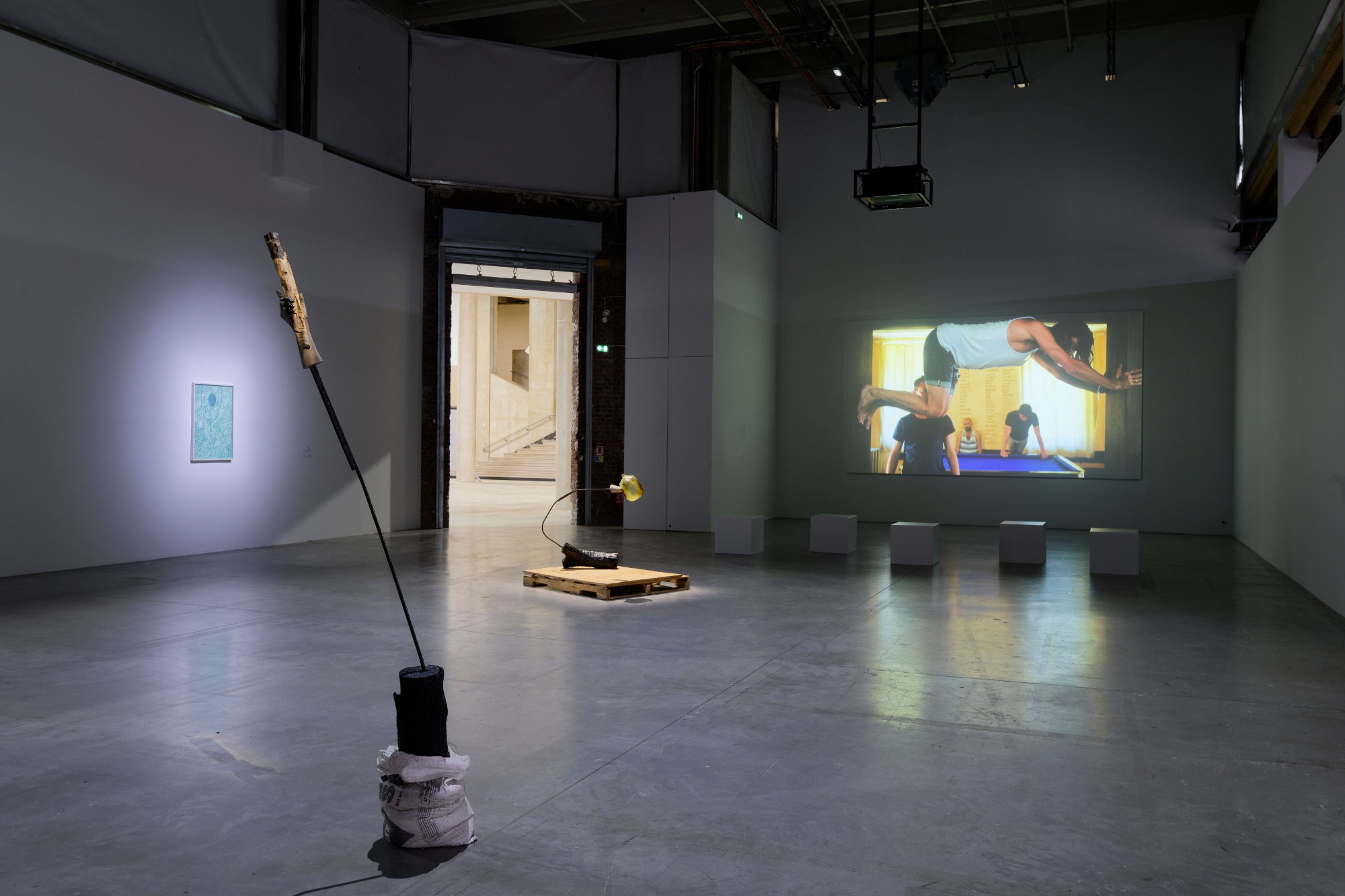
A.K. Burns, Marianne Deludes the World, 2020. Aquaresin, concrete, newspaper, steel rebar, charcoal log, woven polypropylene bag. Courtesy of the artist and Michel Rein (Paris/Brussels). In the background, from left to right : Achraf Touloub, National Materials, 2019. A.K. Burns, Pitch Black Dry Sack, 2019. Lola Gonzàlez, Summer Camp, 2015. Exhibition view « Anticorps », Palais de Tokyo (23.10.2020-28.02.2021). Photo credit: Aurélien Mole

A.K. Burns, Pitch Black Dry Sack, 2019. Aquaresin, concrete, epoxy resin, steel rebar, charcoal log, plywood, shipping pallet. Courtesy of the artist and Michel Rein (Paris/Brussels). In the background : Lola Gonzàlez, Summer Camp, 2015. Exhibition view « Anticorps », Palais de Tokyo (23.10.2020-28.02.2021). Photo credit: Aurélien Mole

A.K. Burns, Pitch Black Dry Sack, 2019. Aquaresin, concrete, epoxy resin, steel rebar, charcoal log, plywood, shipping pallet. Courtesy of the artist and Michel Rein (Paris/Brussels). In the background: Achraf Touloub, National Materials, 2019. Exhibition view « Anticorps », Palais de Tokyo (23.10.2020 – 28.02.2021). Photo credit: Aurélien Mole
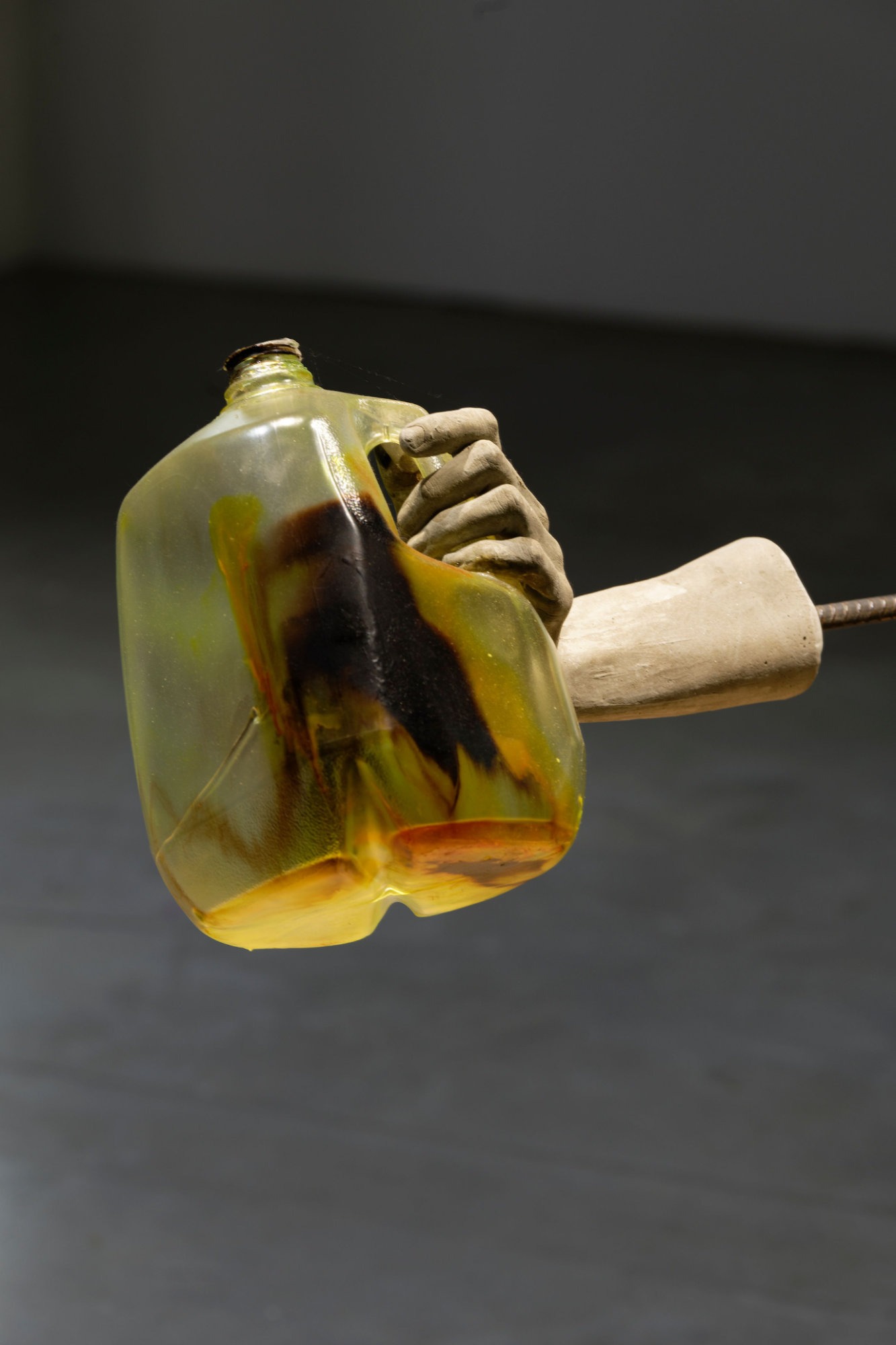
A.K. Burns, Pitch Black Dry Sack, 2019 (detail). Aquaresin, concrete, epoxy resin, steel rebar, charcoal log, plywood, shipping pallet. Courtesy of the artist and Michel Rein (Paris/Brussels). Exhibition view « Anticorps », Palais de Tokyo (23.10.2020 – 28.02.2021). Photo credit: Aurélien Mole

Xinyi Cheng, From left to right: J. and T., 2019. Oil on canvas. Courtesy of the artist, Richard Chang and Antenna Space (Shanghai). For a light, 2020. Oil on canvas. Courtesy of the artist and Balice Hertling (Paris). Untitled, 2019. Huile sur bois. Courtesy de l’artiste et Balice Hertling (Paris). Collection Jacques & Thierry (Paris). Gust, 2019. Oil on canvas. Courtesy of the artist and Balice Hertling (Paris). Guilbaud collection (France). Darling, 2017. Oil on canvas. Courtesy of the artist and Balice Hertling (Paris). Private collection. Moon Water, 2016. Oil on canvas. Courtesy of the artist and Balice Hertling (Paris). Private collection (Geneva). Julien, 2017. Oil on canvas. Courtesy of the artist and Antenna Space (Shanghai) . Private collection (Singapore). Exhibition view « Anticorps », Palais de Tokyo (23.10.2020 – 28.02.2021). Photo credit: Aurélien Mole

Xinyi Cheng, Julien, 2017. Oil on canvas. Courtesy of the artist and Antenna Space (Shanghai). Photo credit: the artist and Antenna Space
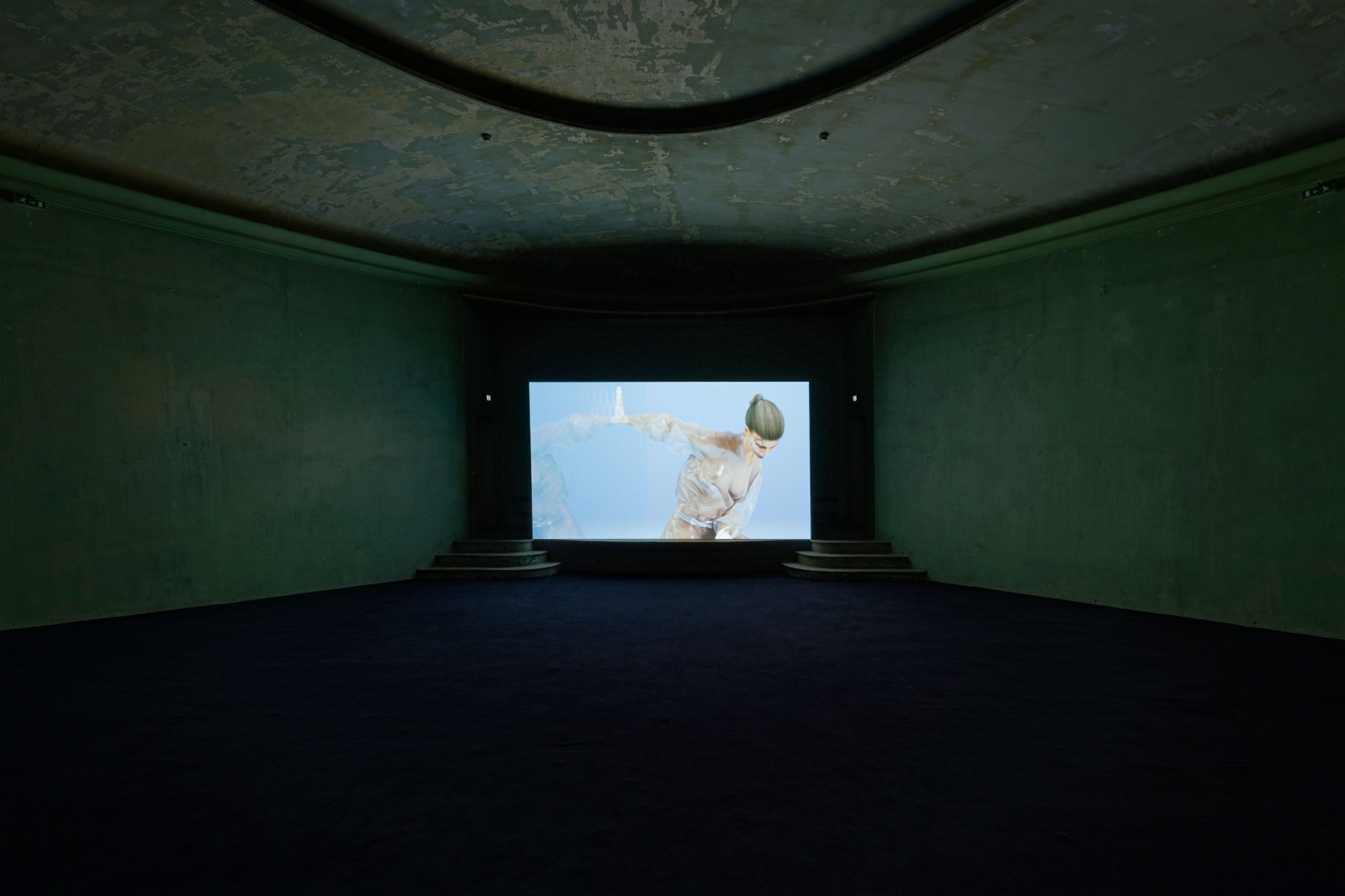
Kate Cooper, Infection Drivers, 2018. Video, sound, color, 7’29’’. Produced in collaboration with Theo Cook. Soundtrack: Bonaventure. Courtesy of the artist. Exhibition view « Anticorps », Palais de Tokyo (23.10.2020 – 28.02.2021). Photo credit: Aurélien Mole
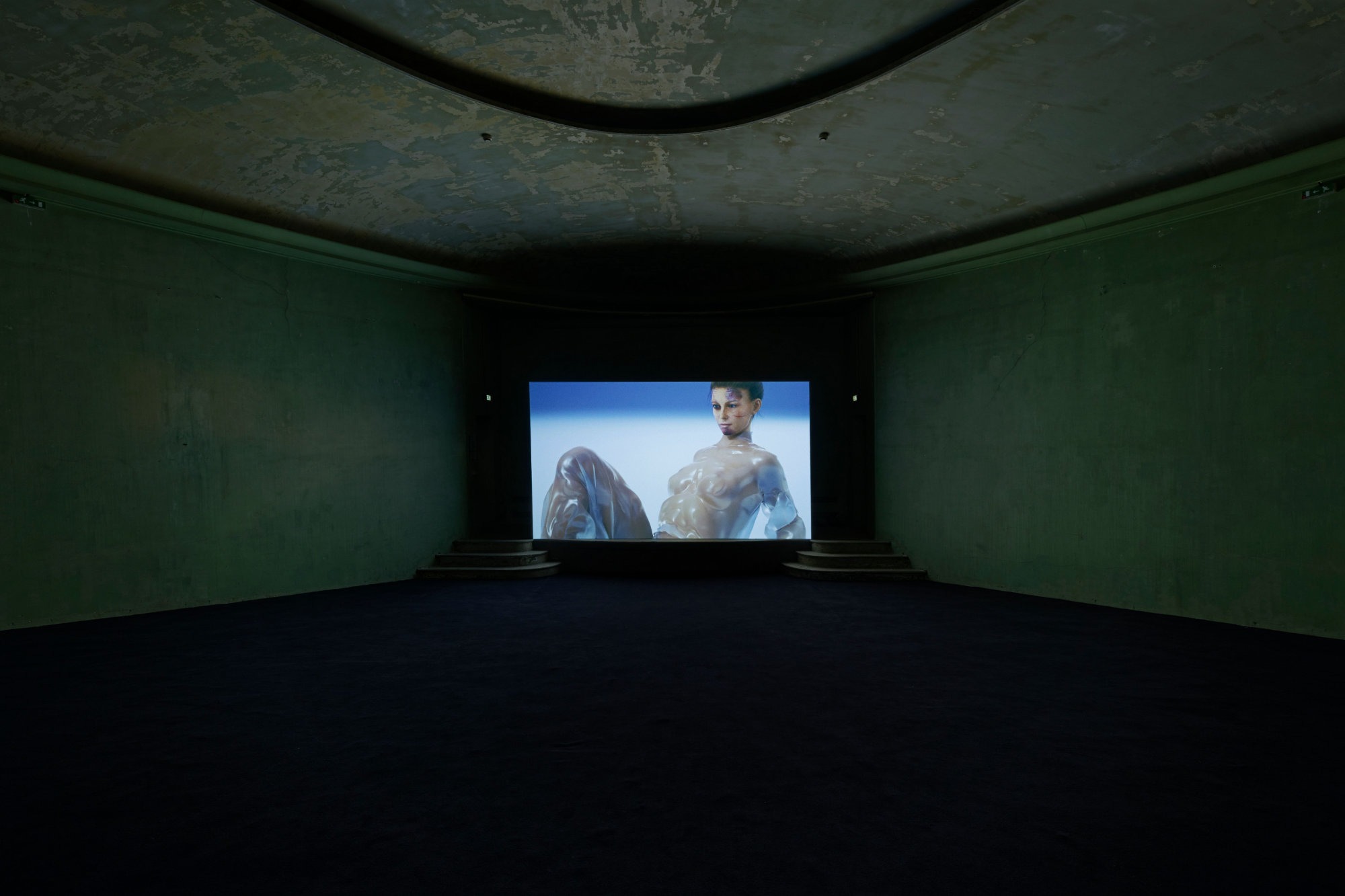
Kate Cooper, Infection Drivers, 2018. Video, color, sound, 7’19”. Produced in collaboration with Theo Cook. Soundtrack: Bonaventure. Courtesy of the artist. Exhibition view « Anticorps », Palais de Tokyo (23.10.2020 – 28.02.2021). Photo credit: Aurélien Mole
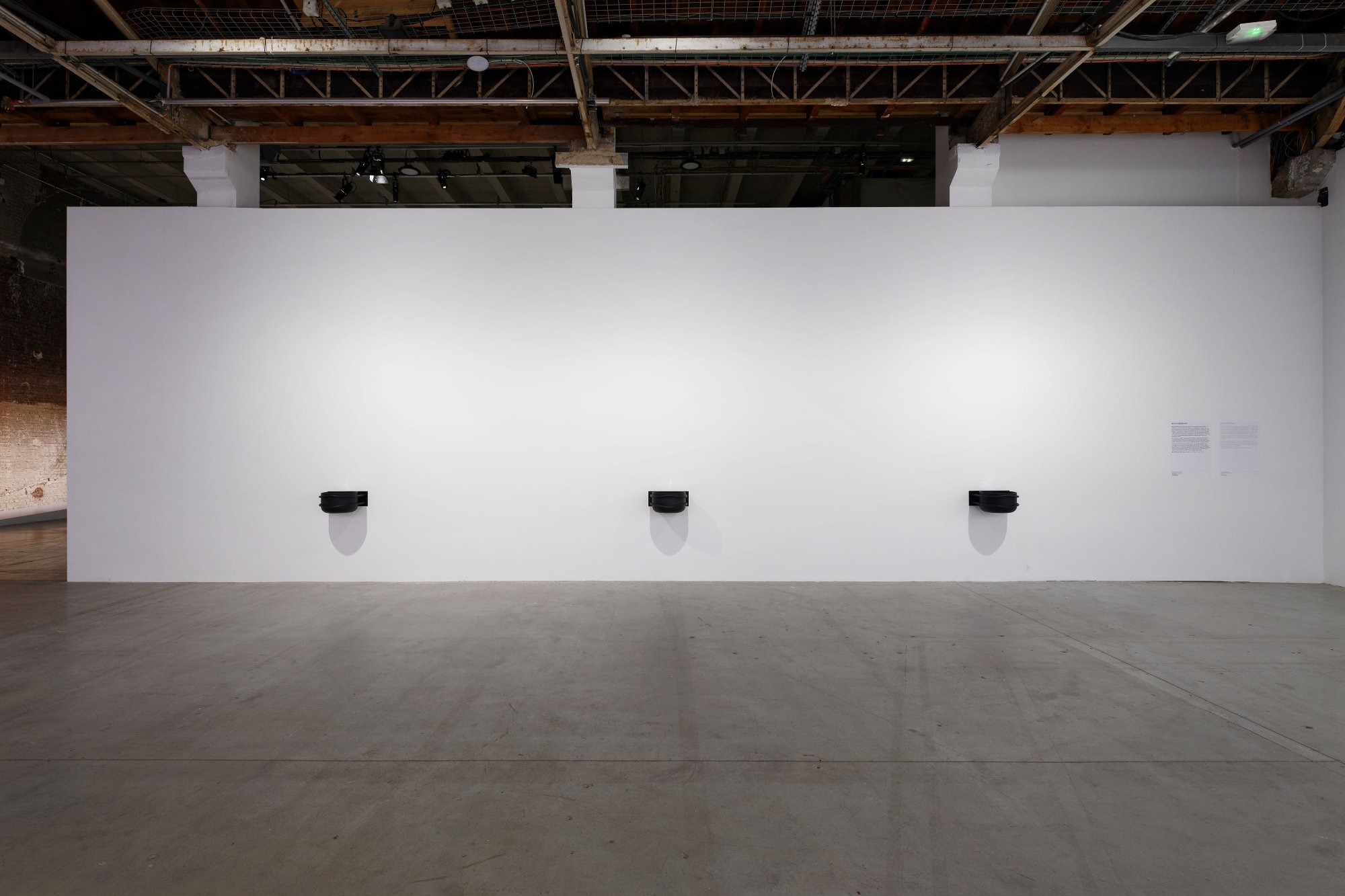
Kevin Desbouis, Untitled (CCMCastaner), 2020. Stainless steel, painting, temporary tattoo. Endless copies. Various dimensions. Courtesy of the artist. Exhibition view « Anticorps », Palais de Tokyo (23.10.2020 – 28.02.2021). Photo credit: Aurélien Mole
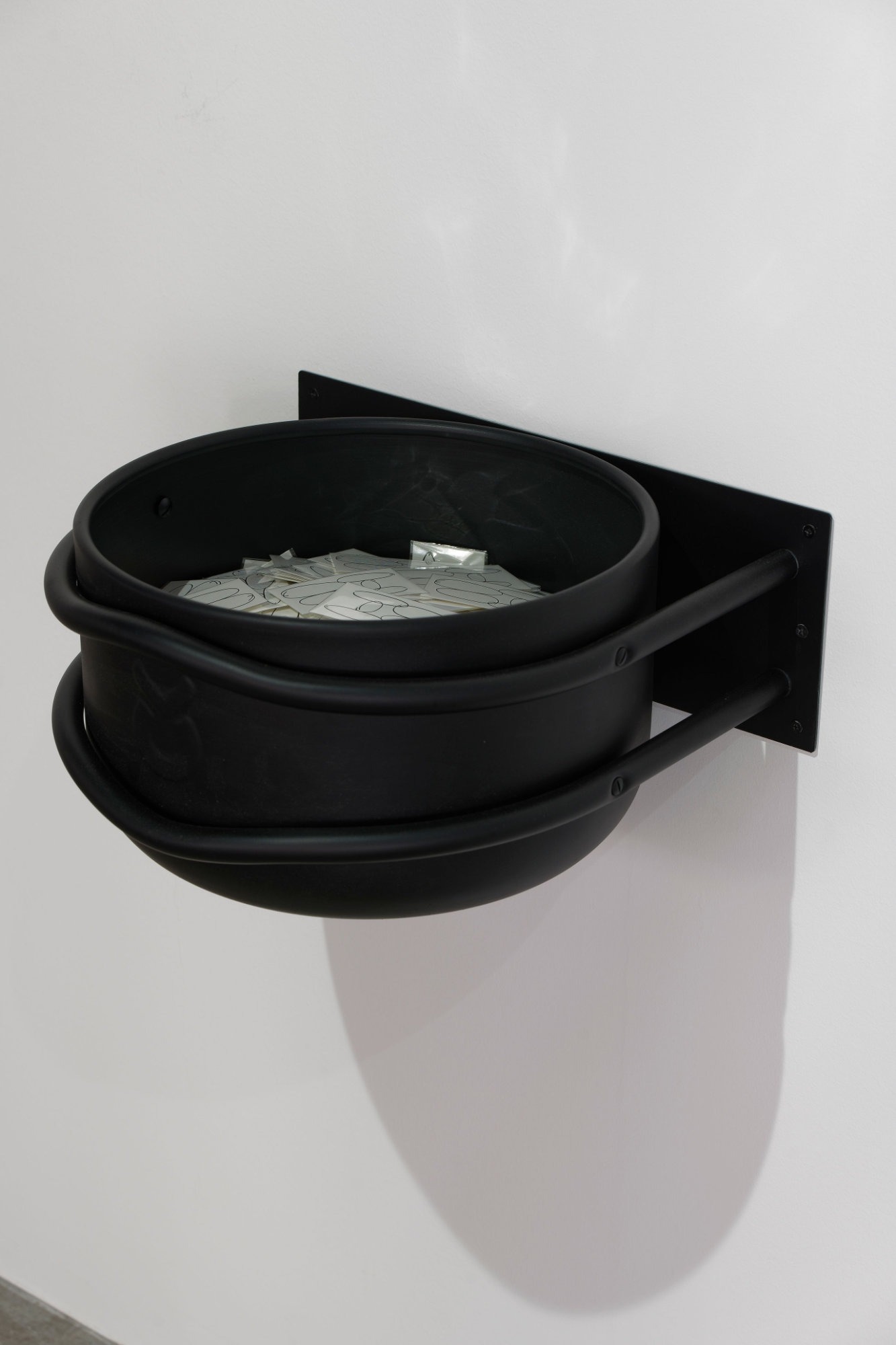
Kevin Desbouis, Untitled (CCMCastaner), 2020. Stainless steel, painting, temporary tattoo. Endless copies. Various dimensions. Courtesy of the artist. Exhibition view « Anticorps », Palais de Tokyo (23.10.2020 – 28.02.2021). Photo credit: Aurélien Mole
The worldwide experience of lockdown and the adoption of social and physical distancing have made us reconsider the idea that our bodies are sealed units. Did we forget how porous we actually are?
The exhibition Antibodies platforms the voices of 20 artists from the French and international artistic scene. With recent and new works they take the pulse of our ability to bond together and help us rethink how we inhabit the world.
With: A.K. Burns, Xinyi Cheng, Kate Cooper, Pauline Curnier Jardin, Kevin Desbouis, Forensic Architecture, Lola Gonzàlez, Emily Jones, Florence Jung, Özgür Kar, Len Lye, Nile Koetting, Tarek Lakhrissi, Carolyn Lazard, Tala Madani, Josèfa Ntjam, Dominique Petitgand, Ghita Skali, Koki Tanaka, Achraf Touloub
A series of events will be programmed to echo some of the issues raised by the exhibition, while the experience of Antibodies will be extended and enhanced by content made available online for “off-site” use.
Curators: Daria de Beauvais, Adélaïde Blanc, Cédric Fauq, Yoann Gourmel, Vittoria Matarrese, François Piron, Hugo Vitrani assisted by Camille Ramanana Rahary
Becoming aware of our vulnerability triggered the rise of borders, fences and barriers around our bodies, homes, social circles and countries, bristled with concerns and suspicions. This situation has increased the already existing inequalities, when it comes to class privilege and exposure to risks. But in the deepening separation between public and private, we became aware that we actually touch and are touched more than we used to, which compels us to redefine our connections as well as our proximities.
“Why should our bodies end at the skin?” asked Donna Haraway1. Antibodies is an exhibition attempting to think through and with skins. It aims at developing several registers of affectivity and presence through the haptic - this tactile relationship that does not require physical contact. Physical estrangement asks for a renewed sociality.
The artists gathered for Antibodies report on caresses, whispers, breathings and threats delving into our emotional transactions and our social relationships. While the exhibition does not turn the current health crisis into a topic, the artworks, as well as the relationships woven between them, allow for an exploration of distance and touch, considering the political and poetic load of the two terms.
The exhibition title’s polysemy then becomes clear as we embrace the new imposed norms and forms of togetherness (distancing) while opening up the horizon for a new social eroticism (touching). It also seems crucial, as Susan Sontag2 once claimed, to substitute the military metaphors often attached to the functioning of our immune systems for a different lexicon, and get busier with hospitality. As such, Antibodies is an invitation for audiences to experience Palais de Tokyo both as a home (in vitro) and a living network (in vivo). This also means thinking differently about the ephemeral communities that Palais de Tokyo may create and gather, and more specifically the relationships that are suggested between audience and artworks.
1. Donna Haraway, “The Cyborg Manifesto” in The Socialist Review, no. 80 (1985): 65–108.
2. Susan Sontag, Aids and its Metaphors, New York, Farrar, Straus and Giroux, 1989: “Disease is seen as an invasion of alien organisms, to which the body responds by its own military operations, such as the mobilizing of immunological “defences,” and medicine is “aggressive.” [...] The metaphor implements the way. Particularly dreaded diseases are envisaged as an alien “other”, as enemies are in modern war; and the move from the. demonization of the illness to the attribution of fault to the patient is an inevitable one, no matter if patients are thoughts of as victims.”
The exhibition Antibodies platforms the voices of 20 artists from the French and international artistic scene. With recent and new works they take the pulse of our ability to bond together and help us rethink how we inhabit the world.
With: A.K. Burns, Xinyi Cheng, Kate Cooper, Pauline Curnier Jardin, Kevin Desbouis, Forensic Architecture, Lola Gonzàlez, Emily Jones, Florence Jung, Özgür Kar, Len Lye, Nile Koetting, Tarek Lakhrissi, Carolyn Lazard, Tala Madani, Josèfa Ntjam, Dominique Petitgand, Ghita Skali, Koki Tanaka, Achraf Touloub
A series of events will be programmed to echo some of the issues raised by the exhibition, while the experience of Antibodies will be extended and enhanced by content made available online for “off-site” use.
Curators: Daria de Beauvais, Adélaïde Blanc, Cédric Fauq, Yoann Gourmel, Vittoria Matarrese, François Piron, Hugo Vitrani assisted by Camille Ramanana Rahary
Becoming aware of our vulnerability triggered the rise of borders, fences and barriers around our bodies, homes, social circles and countries, bristled with concerns and suspicions. This situation has increased the already existing inequalities, when it comes to class privilege and exposure to risks. But in the deepening separation between public and private, we became aware that we actually touch and are touched more than we used to, which compels us to redefine our connections as well as our proximities.
“Why should our bodies end at the skin?” asked Donna Haraway1. Antibodies is an exhibition attempting to think through and with skins. It aims at developing several registers of affectivity and presence through the haptic - this tactile relationship that does not require physical contact. Physical estrangement asks for a renewed sociality.
The artists gathered for Antibodies report on caresses, whispers, breathings and threats delving into our emotional transactions and our social relationships. While the exhibition does not turn the current health crisis into a topic, the artworks, as well as the relationships woven between them, allow for an exploration of distance and touch, considering the political and poetic load of the two terms.
The exhibition title’s polysemy then becomes clear as we embrace the new imposed norms and forms of togetherness (distancing) while opening up the horizon for a new social eroticism (touching). It also seems crucial, as Susan Sontag2 once claimed, to substitute the military metaphors often attached to the functioning of our immune systems for a different lexicon, and get busier with hospitality. As such, Antibodies is an invitation for audiences to experience Palais de Tokyo both as a home (in vitro) and a living network (in vivo). This also means thinking differently about the ephemeral communities that Palais de Tokyo may create and gather, and more specifically the relationships that are suggested between audience and artworks.
1. Donna Haraway, “The Cyborg Manifesto” in The Socialist Review, no. 80 (1985): 65–108.
2. Susan Sontag, Aids and its Metaphors, New York, Farrar, Straus and Giroux, 1989: “Disease is seen as an invasion of alien organisms, to which the body responds by its own military operations, such as the mobilizing of immunological “defences,” and medicine is “aggressive.” [...] The metaphor implements the way. Particularly dreaded diseases are envisaged as an alien “other”, as enemies are in modern war; and the move from the. demonization of the illness to the attribution of fault to the patient is an inevitable one, no matter if patients are thoughts of as victims.”
